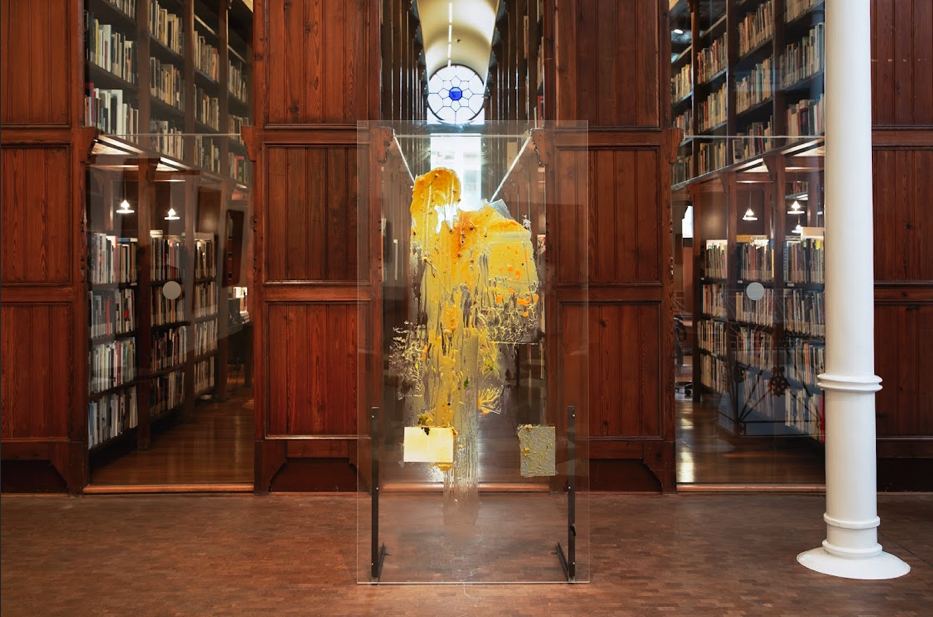In 2025, Sala d’Art Jove and Museu Tàpies jointly developed the second edition of Dust. Collaborative research laboratory. For two months, a group of artists made up of Meritxell Cañas, Natalia Domínguez and Salva G. Ojeda, under the mentorship of Marc Larré, carried out a residency at the Museu Tàpies based on experimentation with matter in the context of the exhibition Antoni Tàpies: The Imagination of the World.
The theoretical framework of the research revolved around smell. Interpretations of Antoni Tàpies’ work have traditionally focused on the haptic, emphasising the optical and tactile values of the matter paintings from the 1950s onwards. This new approach to Tàpies’ pre-material work, through its olfactory properties and suggestions, marks an important paradigm shift, as it reveals an entire sensorial dimension that remained latent in historical documents. In A Personal Memoir. Fragment for an Autobiography (1977), Tàpies himself mentions the perfume of a high society woman, the smell of moss and cork from the cribs in the Santa Llúcia market or the aromas of resin, lavender and thyme from the woods near Barcelona, among many other examples, as keys that anchor memory in experiences beyond the narrative and the visual. As stated in the exhibition’s programme, art critics of the time also concurred in pointing out “fragrant instruments”, “an empty perfume” and “the smell of matches and sewage” in Tàpies’ cosmology, which has led to diverse conclusions.
The main outcome of the research is the sculpture Olor de fòsfor i claveguera [Smell of phosphorus and sewers, 2025], which is temporarily installed in the exhibition as part of the planned transformations aimed at pluralising, through contemporary voices, that dual singularity of the “imagination” and the “world”. This new work is based on the idea of enfleurage, an ancient technique for obtaining essences that uses grease as a means of extracting the scent of flowers — also of objects — through direct contact with the oily substance. A large methacrylate screen serves as a support for the encounter between grease and various olfactory objects, both natural and artificial. However, rather than taking the procedure to its final stage, the work shows the process paused precisely at the moment of contact between the grease and the object, thus emphasising the material moment prior to its dissipation as an essence — or as an absolute.
The proposal dialogues with the space on three axes. On the one hand, the transparency of the whole generates a point of condensation and crossover between the exhibition and the new intervention, superimposing a new layer of material and meaning. On the other, it revisits one of the main themes of Tàpies’ work: the raw, dense wall as a particular form of realism, halfway between figuration and abstraction, which he would later reinterpret by replacing materials such as marble dust or cement with everyday objects and even varnish. The third gesture proposed by the piece is to raise the display case — so present throughout the exhibition — into a vertical plane, placing the work in a third space between the horizontality of the display case and the fixed verticality of the paintings on the wall.
Aromas do not usually have adjectives of their own, as is the case with other sense perceptions. In the absence of specific names, they borrow them from neighbouring objects, which is why it is often said that this smells like that, in a sort of infinite metaphor. Following this exercise of infinity, the work proposes singular “object-smells” that would potentially encompass the entire universe. The idea is not to propose an olfactory experience, but to activate an imagination of smell.














